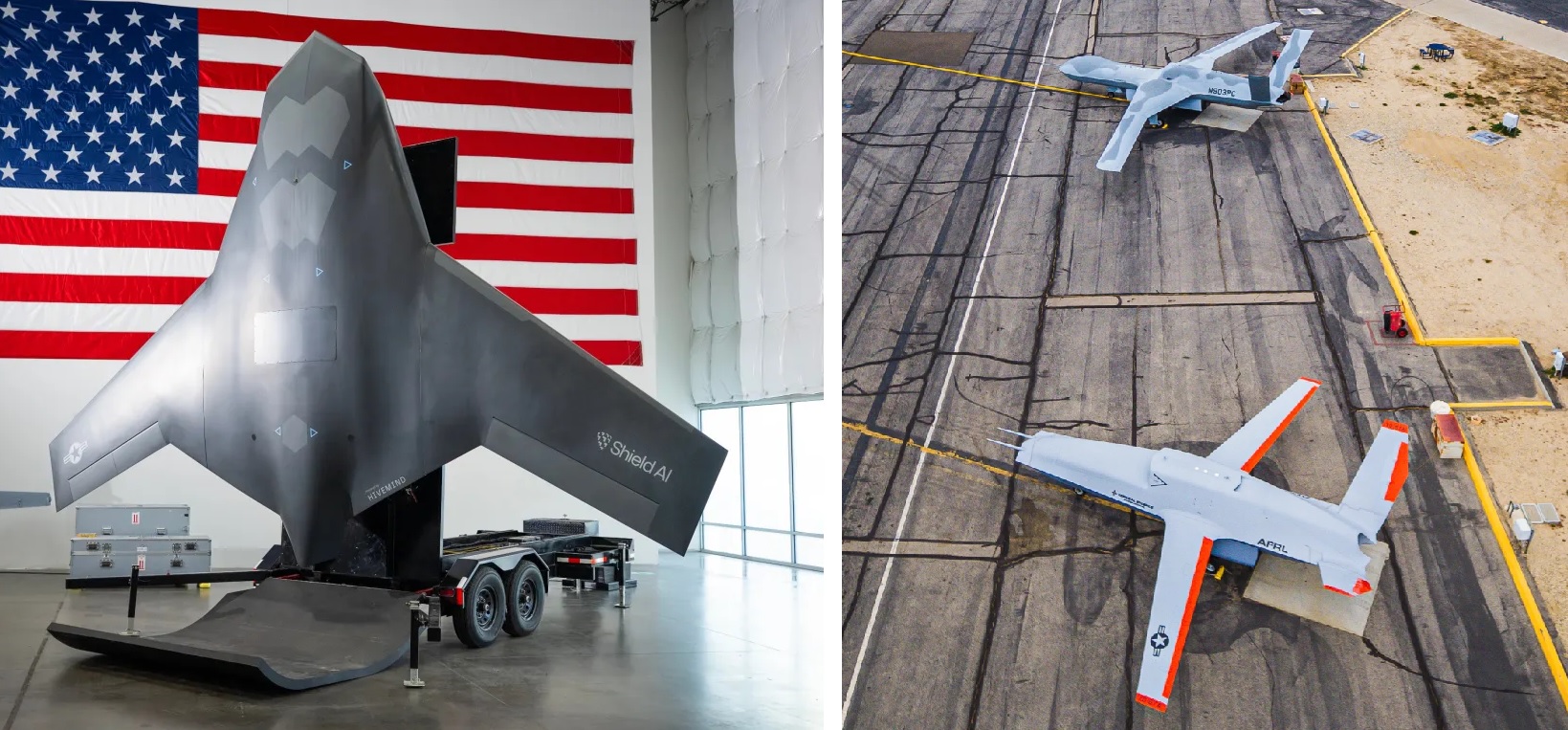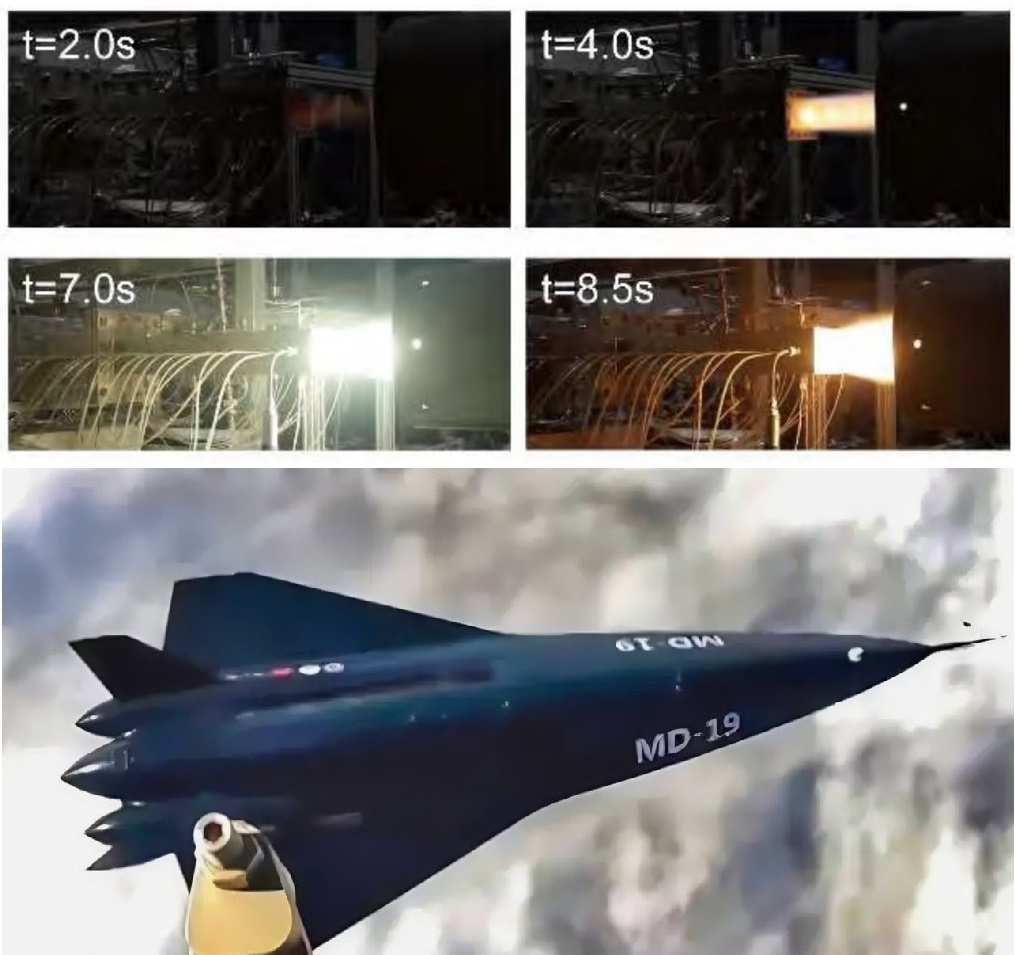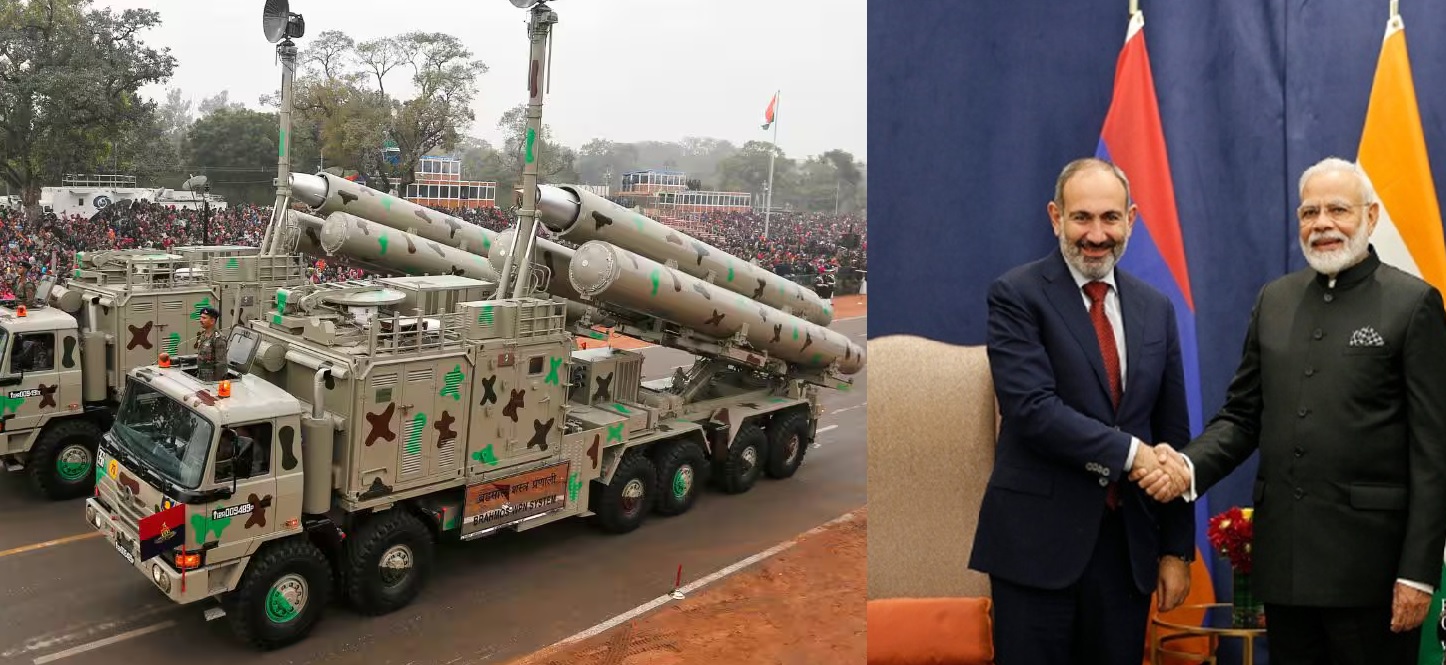Shield AI’s X-BAT Drone Brings Fighter-Class Power to the Loyal Wingman Race

Shield AI’s unveiling of the X-BAT — a jet-powered, autonomous vertical takeoff and landing (VTOL) drone — has ignited a wave of speculation across the defense community and social media alike. Much of the online buzz centers on one claim: that X-BAT “uses the same engine as an F-15 or F-16,” and will “cost the same as the YFQ-44 and YFQ-42 Collaborative Combat Aircraft (CCA)” under the U.S. Air Force’s ongoing program.
That sounds simple enough, but it masks a complex reality. The X-BAT and the YFQ drones may share a cost bracket and similar buzzwords — autonomy, AI flight control, modular payloads — yet they occupy very different tiers of power, performance, and purpose.
A Fighter’s Heart in a Drone’s Frame
Shield AI has confirmed that X-BAT will be powered by a General Electric fighter-class turbofan, part of the same family that drives the F-15 Eagle and F-16 Fighting Falcon — the F110 series. This engine line produces between 25,000 and 32,000 pounds of thrust, making it one of the most powerful single engines in active service.
For a drone, that’s unprecedented. Most tactical UCAVs — including the U.S. Air Force’s current YFQ-44 (Anduril Fury) and YFQ-42 (General Atomics) prototypes — use much smaller turbofans producing roughly 4,000 pounds of thrust, with total aircraft weights around 5,000 pounds.
By contrast, X-BAT’s reported takeoff weight exceeds 20,000 pounds, supported by over 25,000 pounds of thrust. This puts it in a league of its own — a Group 5 combat drone, closer in scale to a small fighter jet than a traditional unmanned aircraft.
What the X-BAT Aims to Do
Shield AI positions X-BAT as a “vertical takeoff and landing autonomous fighter”, intended to operate without runways. This VTOL capability allows the drone to be deployed from ships, island bases, or dispersed ground sites, enhancing survivability in contested environments.
The company claims a range of around 2,000 nautical miles while carrying a full weapons payload, a remarkable figure for any unmanned aircraft of its class. The internal bay can host air-to-air or air-to-ground weapons, and the airframe’s shaping suggests radar-reducing features suitable for stealth operations.
X-BAT’s autonomy is powered by Shield AI’s Hivemind AI pilot, already tested on other platforms. The system enables autonomous teaming — where drones can coordinate with manned aircraft or other uncrewed systems without direct human input.
If operationalized, this would make X-BAT capable of acting as a loyal wingman to next-generation fighters like the F-35, or operating independently for strike, reconnaissance, or electronic warfare missions.
How It Compares: YFQ-44 and YFQ-42
The YFQ-44 “Fury”, developed by Anduril, and YFQ-42, by General Atomics Aeronautical Systems, are both competing prototypes under the USAF’s Collaborative Combat Aircraft (CCA) program. Their designs emphasize affordability, attritability, and mass production — drones that can fly alongside fighters, carry sensors or munitions, and be produced in large numbers at low cost.
-
YFQ-44 Fury: ~20 ft long, ~17 ft wingspan, 5,000 lb MTOW, powered by a small turbofan (~4,000 lbf thrust), capable of near-Mach 1 flight.
-
YFQ-42: similar dimensions and performance envelope; both optimized for runway operations and relatively low-cost manufacturing.
Their mission profiles are clear — fast, stealthy companions that extend sensor range and add strike volume for manned aircraft.
X-BAT, however, aims higher in power and flexibility. Its fighter-class engine, VTOL design, and extended range suggest a platform that could replace or complement fighters in frontline operations, not merely support them.
The Cost Debate
The most controversial claim surrounding X-BAT is cost.
Shield AI and several defense analysts have cited a target unit price of $25–30 million, roughly the same as the Air Force’s goal for CCAs. For comparison, a modern F-35A costs around $82 million.
If Shield AI can truly deliver X-BAT at this cost — despite its F110-class engine, VTOL system, and larger payload capacity — it would represent a dramatic leap in cost-to-capability ratio.
However, analysts note that such price comparisons can be misleading. The $25–30 million figures for CCAs refer primarily to flyaway costs, not including R&D, spares, or sustainment. A heavier, more complex drone like X-BAT could incur higher operating and maintenance costs, even if its initial production price matches that of the YFQ drones.
Still, Shield AI argues that using a mature engine and common logistics with existing fighters will reduce lifecycle expenses. The company’s executives have suggested that a global support ecosystem for F110 engines already exists, allowing rapid fielding and easier sustainment.
Operational Implications
If successful, X-BAT could reshape how air forces think about combat aviation. Its combination of fighter-level power, long range, and runway independence could make it invaluable for distributed operations — particularly in the Indo-Pacific, where austere basing and maritime dispersal are critical.
A squadron of X-BATs could operate from small airstrips, naval vessels, or even forward logistics points, conducting deep strike, electronic warfare, or autonomous escort missions without requiring the infrastructure of traditional airbases.
In that sense, Shield AI’s ambition for X-BAT aligns with the U.S. Air Force’s evolving concept of “affordable mass with persistence” — swarms of advanced, semi-autonomous systems augmenting manned fighters at a fraction of the cost.
The Bigger Picture
The debate over X-BAT’s price and power mirrors a broader question in modern air warfare: can autonomy and additive manufacturing truly break the cost curve of combat aviation?
For now, X-BAT remains in the prototype and development phase. But its specifications — 25K+ lbs thrust, 20K+ lbs takeoff weight, 2,000 nm range, and fighter-grade performance — mark it as one of the most ambitious autonomous aircraft yet conceived in the West.
Whether Shield AI can deliver that performance within the CCA price bracket will determine if the X-BAT becomes a disruptive benchmark or just another ambitious prototype in the race for the future of air combat.
✍️ This article is written by the team of The Defense News.






